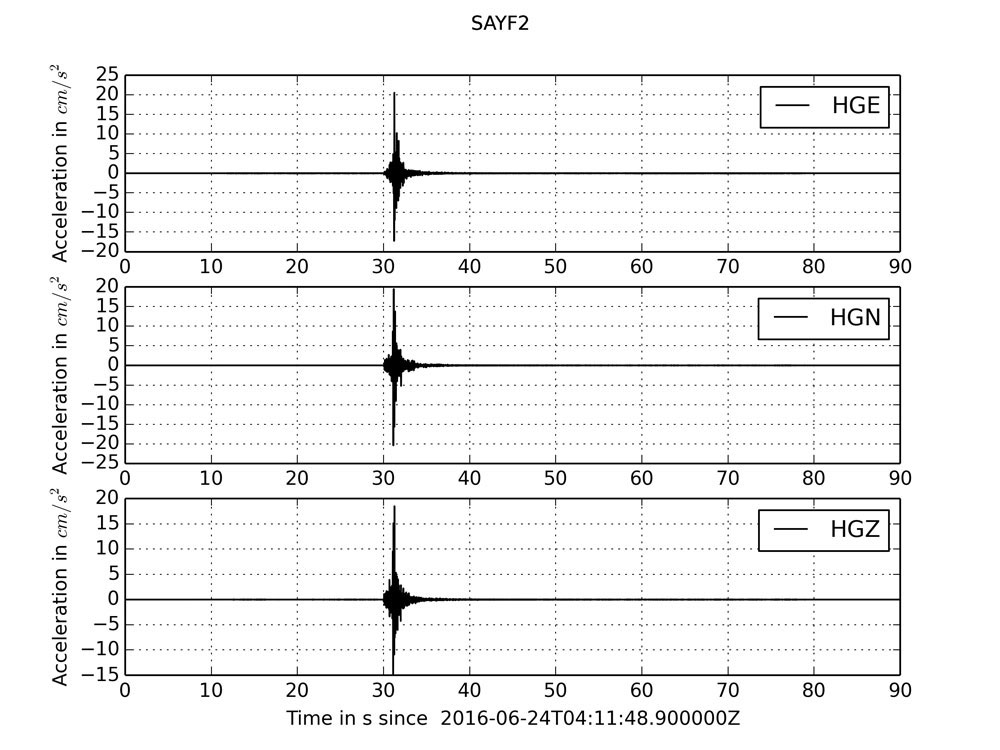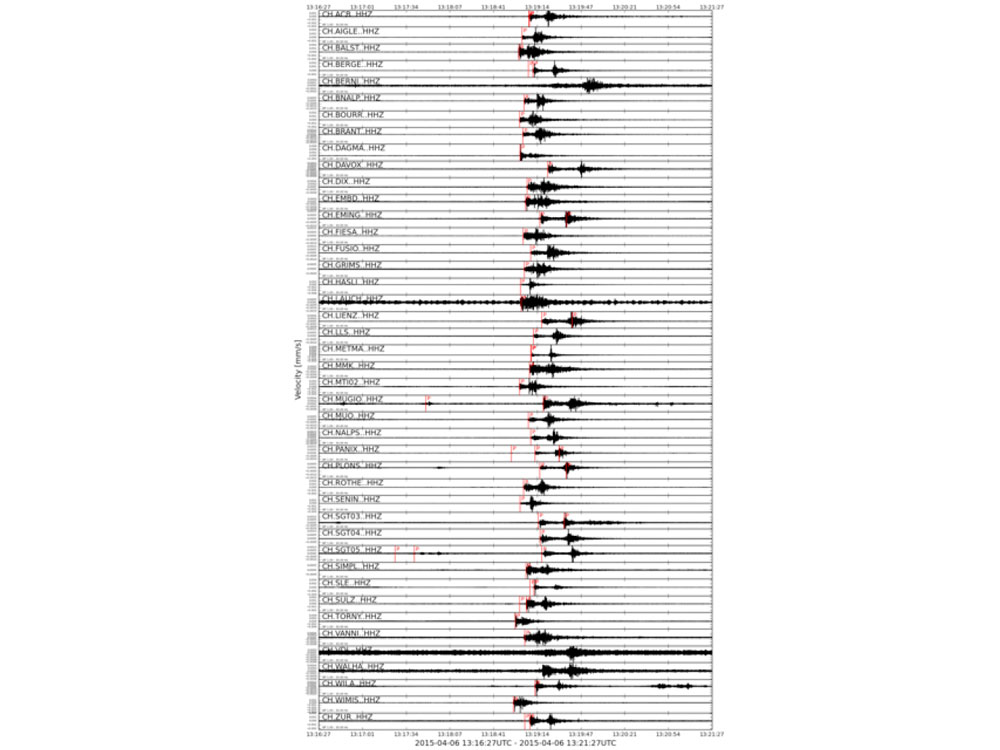The SED's seismic network records continuous data in real-time from over 200 permanent stations in Switzerland and an additional approximately 50 permanent stations in neighbouring regions, as well as from temporary stations set up for various projects. We also can retrieve data from a dozen dial-up strong motion stations that record only during strong earthquakes when in proximity to the epicenter, though this network is no longer actively maintained.
The majority of this huge dataset, which includes broadband, strong motion and short period seismic data, is openly available in near real-time to the public and the scientific community.
SED waveforms can be accessed through a variety of tools that are described below.
Real-time waveforms overview
Images of recent ground shaking across Switzerland are available on regularly updated images. These display the ground motion velocity being recorded within seconds of real-time at selected CHNet seismic stations across Switzerland. The location of the stations shown can be seen in the network maps.
Various time periods are provided to see different time windows for recent ground shaking across Switzerland:
The entire waveform archive is accessible in raw mseed waveform format using fdsnws-dataselect.
More information is found on the FDSN Web Services section.
Swiss waveform data is available through various interactive portals. The SED offer access to all waveform data in our archives via:
- SED WebDC3 Waveform Portal to access continuous raw waveform data in mseed format. Restricted data is also available on this portal, though a password is required. Email SED_data_access@sed.ethz.ch if you have reason to access these restricted datasets.
- SED Strong-Motion Portal, where event-based data and strong motion parameters can be explored with selection on the level of event location and magnitude, seismic station or strong motion parameters. Data is made available on this site within minutes of the occurrence of an earthquake greater the M2.5. All processing is automated. For the strong motion portal, processed waveforms may be visualised before being downloaded, and data can either be downloaded in raw format (directed through the waveform portal) or in processed acceleration in both mseed, ascii and SAC format.
The SED is also part of ORFEUS EIDA, and acts as EIDA node gateway for all data collected by Swiss groups. Swiss data that is unrestricted is accessible on two similar EIDA portals:
- EIDA Waveform Portal for raw continuous data
- EIDA RRSM Portal for event-based data and strong motion parameters, can be explored and data retrieved. Although the RRSM and the SED Strong-Motion Portal are very similar, the RRSM (Raw Rapid Strong Motion ) portal is triggered by EMSC events greater than M3.5, while the SED portal uses the SED events greater than M2.5. The RRSM is a joint development between the SED and the ORFEUS Data Center.
All data sets managed by SED have DOIs (Digital Object Identifier) associated with their seismic network according to the standard procedure approved in 2014 by the FDSN. Please use all relevant DOI either directly in the paper as a reference, in your acknowledgments or directly, as appropriate.
Read also: Why Seismic Networks Need Digital Object Identifiers

